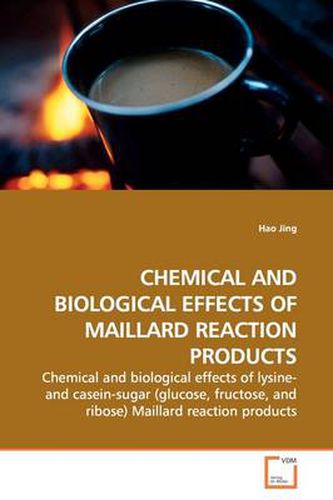Readings Newsletter
Become a Readings Member to make your shopping experience even easier.
Sign in or sign up for free!
You’re not far away from qualifying for FREE standard shipping within Australia
You’ve qualified for FREE standard shipping within Australia
The cart is loading…






This title is printed to order. This book may have been self-published. If so, we cannot guarantee the quality of the content. In the main most books will have gone through the editing process however some may not. We therefore suggest that you be aware of this before ordering this book. If in doubt check either the author or publisher’s details as we are unable to accept any returns unless they are faulty. Please contact us if you have any questions.
There were significant differences between chemical characteristics of ribose (Rib)-, glucose (Glc)-, and fructose (Fru)-lysine (Lys) Maillard reaction products (MRPs). Rib was the most reactive sugar and exerted the greatest change in Maillard-reaction (MR), followed by Glc and Fru in the sugar-Lys model. All three sugar-Lys MRPs not only exhibited strong free radical scavenging activity in chemical systems, but also protected intestinal Caco-2 cells from injury caused by oxidants and transition metal ions. Different chemical characteristics of MRPs generated by the three sugars could not be associated with distinct antioxidant properties in most cases. While antioxidant activities were apparent for whole MRP mixtures, ethanol precipitates (i.e., HMW fraction), more so than ethanol extracts (i.e., LMW fraction), were mainly responsible for scavenging HO and DPPH radicals and protecting against both ferrous ion- and cupric ion- induced cytotoxicity. Free radical scavenging activities of MRPs were influenced not only by high and low molecular fractions, but also by the source of ROS present in the reaction environment.
$9.00 standard shipping within Australia
FREE standard shipping within Australia for orders over $100.00
Express & International shipping calculated at checkout
This title is printed to order. This book may have been self-published. If so, we cannot guarantee the quality of the content. In the main most books will have gone through the editing process however some may not. We therefore suggest that you be aware of this before ordering this book. If in doubt check either the author or publisher’s details as we are unable to accept any returns unless they are faulty. Please contact us if you have any questions.
There were significant differences between chemical characteristics of ribose (Rib)-, glucose (Glc)-, and fructose (Fru)-lysine (Lys) Maillard reaction products (MRPs). Rib was the most reactive sugar and exerted the greatest change in Maillard-reaction (MR), followed by Glc and Fru in the sugar-Lys model. All three sugar-Lys MRPs not only exhibited strong free radical scavenging activity in chemical systems, but also protected intestinal Caco-2 cells from injury caused by oxidants and transition metal ions. Different chemical characteristics of MRPs generated by the three sugars could not be associated with distinct antioxidant properties in most cases. While antioxidant activities were apparent for whole MRP mixtures, ethanol precipitates (i.e., HMW fraction), more so than ethanol extracts (i.e., LMW fraction), were mainly responsible for scavenging HO and DPPH radicals and protecting against both ferrous ion- and cupric ion- induced cytotoxicity. Free radical scavenging activities of MRPs were influenced not only by high and low molecular fractions, but also by the source of ROS present in the reaction environment.